Minnows
Minnows are, perhaps, the most commonly seen fish in the Lake. In the summertime, wading children use buckets to scoop up these usually small and abundant fish.
However, not all small fish are minnows; some are the fry of species which grow to much larger sizes.
Further, not all minnows are small; the largest member of this family to be found in the Lake is the northern pikeminnow, a fish as large as any trout. The northern pikeminnow is not only interesting because of its size, but because of its name. Prior to this century, this was known as the northern squawfish—indeed, locals still refer to it as such. However, in 1999, the squawfish became the victim of political correctness and is now officially a pikeminnow. What the fish, itself, thought of this change is not known.
There are five species of minnow in Kootenay Lake: lake chub, peamouth, northern pikeminnow, longnose dace, redside shiner. Minnows eat detritus, algae and microorganisms, and in turn are eaten by larger fish (piscivores).
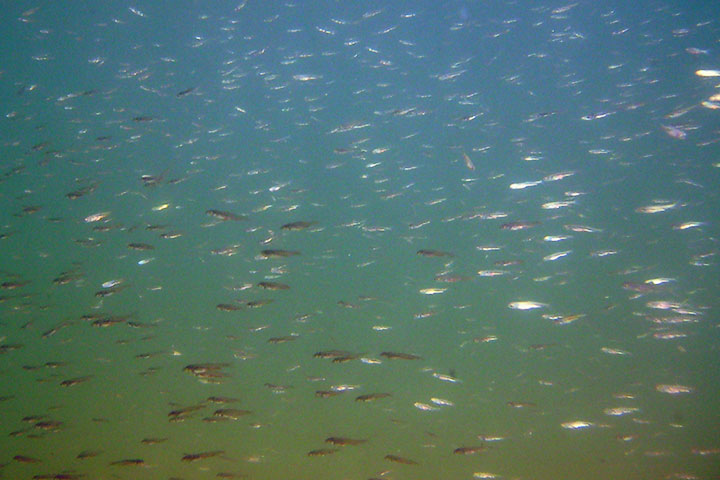 Minnows usually forage and travel in a shoal.
Minnows usually forage and travel in a shoal.
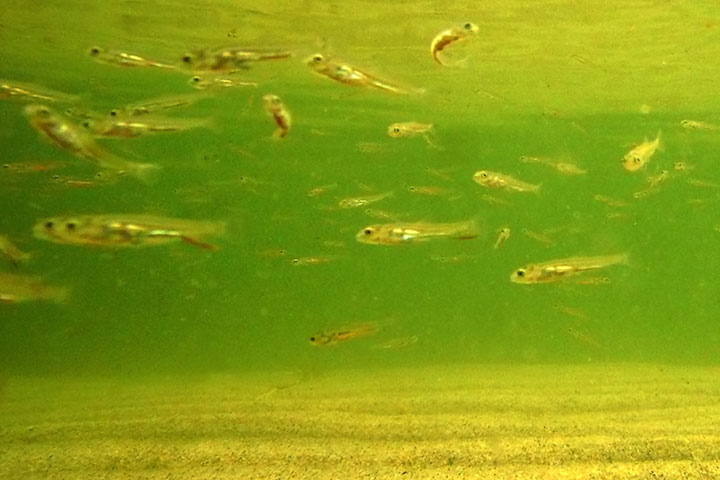 These minnows are in shallow water: the sand is seen at the bottom of the picture and the underside of the lake surface is seen above. There is probably safety from larger piscivores in the shallows.
These minnows are in shallow water: the sand is seen at the bottom of the picture and the underside of the lake surface is seen above. There is probably safety from larger piscivores in the shallows.
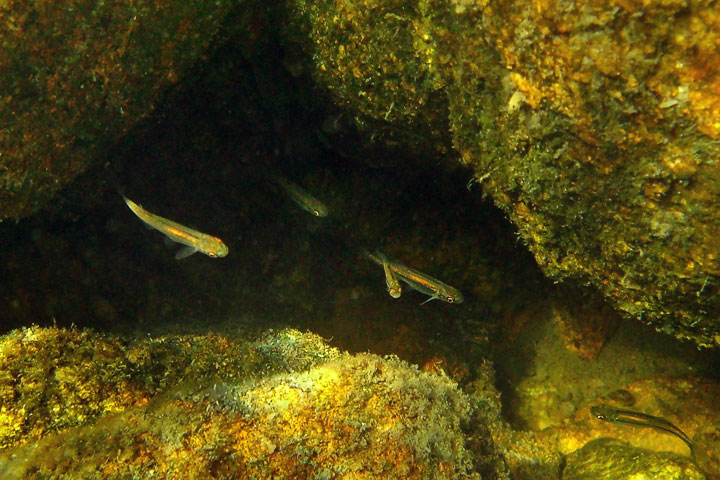 In somewhat deeper waters, minnows seem to stay near rocks, possibly for a quick escape to places larger fish cannot go.
In somewhat deeper waters, minnows seem to stay near rocks, possibly for a quick escape to places larger fish cannot go.
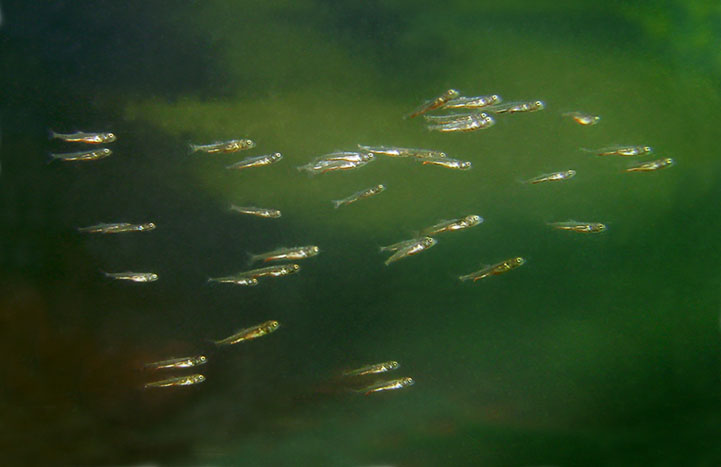 Some species of minnows have the name shiner (the Redside Shiner is found locally). It is easy to see how the name came about as these minnows glisten in the sunlight. But, does this picture show a species which includes the name, shiner? I don’t know.
Some species of minnows have the name shiner (the Redside Shiner is found locally). It is easy to see how the name came about as these minnows glisten in the sunlight. But, does this picture show a species which includes the name, shiner? I don’t know.
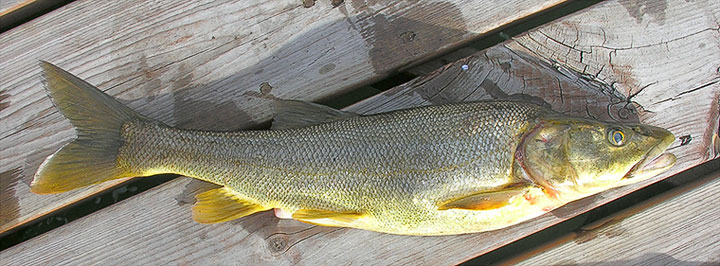 The northern pikeminnow is the largest member of the minnow family to be found in the Lake (this one is 46 cm long). It is generally not considered the best fish for eating. Until this century, the pikeminnow was called a squawfish.
The northern pikeminnow is the largest member of the minnow family to be found in the Lake (this one is 46 cm long). It is generally not considered the best fish for eating. Until this century, the pikeminnow was called a squawfish.
![]()